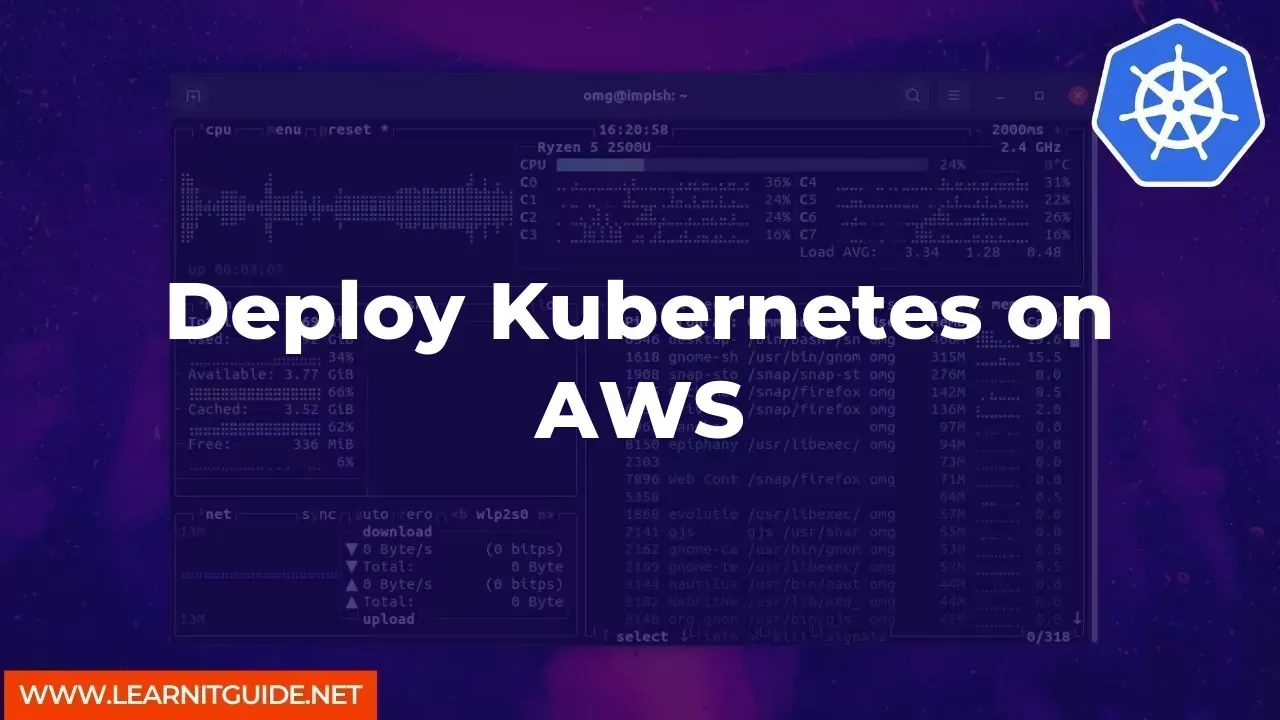Kubernetes is a powerful container orchestration platform that has quickly become the go-to tool for managing and deploying containerized applications. Amazon Web Services (AWS) provides a wide range of services for hosting and managing applications, and with the help of Kubernetes, it's possible to deploy highly scalable and resilient containerized applications on AWS.
In this article, we'll walk you through the steps required to deploy Kubernetes on AWS. We'll cover everything from creating an Amazon Elastic Kubernetes Service (EKS) cluster to deploying a sample application on the cluster.
Before we get started, there are a few prerequisites you'll need to meet. Firstly, you'll need an AWS account with permissions to create resources. Secondly, you'll need to have the AWS Command Line Interface (CLI) installed on your local machine. Finally, you'll need to have a basic understanding of Kubernetes concepts.
With that out of the way, let's get started!
Creating an EKS Cluster
The first step in deploying Kubernetes on AWS is to create an EKS cluster. An EKS cluster is a managed Kubernetes control plane that makes it easy to run Kubernetes on AWS.
To create an EKS cluster, follow these steps:
Open the AWS Management Console and navigate to the Amazon EKS service.
Click the "Create Cluster" button.
Choose a name for your cluster and select the region you want to deploy to.
Choose the version of Kubernetes you want to use.
Choose the VPC and subnets that you want to use for your cluster.
Choose the IAM role that Kubernetes will use to create AWS resources.
Click the "Create" button.
This process will take a few minutes to complete. Once your cluster is created, you can connect to it using the Kubernetes command line tool, kubectl.
Deploying a Sample Application
Now that you have your EKS cluster up and running, it's time to deploy a sample application. For this example, we'll use the Kubernetes guestbook application, which is a simple application that allows users to leave messages.
To deploy the guestbook application, follow these steps:
Clone the guestbook repository from GitHub:
git clone https://github.com/kubernetes/examples.git
Navigate to the guestbook/v2 directory:
cd examples/guestbook/v2
Create the Redis master deployment:
kubectl create -f redis-master-deployment.yaml
Create the Redis master service:
kubectl create -f redis-master-service.yaml
Create the Redis slave deployment:
kubectl create -f redis-slave-deployment.yaml
Create the Redis slave service:
kubectl create -f redis-slave-service.yaml
Create the guestbook deployment:
kubectl create -f guestbook-deployment.yaml
Create the guestbook service:
kubectl create -f guestbook-service.yaml
Once you've completed these steps, you should be able to access the guestbook application by opening the URL of the guestbook service in your web browser.
In this article, we've covered the steps required to deploy Kubernetes on AWS and deploy a sample application on the cluster. While these steps provide a basic starting point, there's a lot more you can do with Kubernetes on AWS. We encourage you to explore the many possibilities and see what you can achieve with these powerful tools.
Related Searches and Questions asked:
That's it for this post. Keep practicing and have fun. Leave your comments if any.








0 Comments